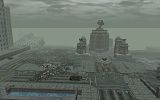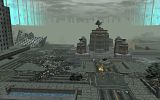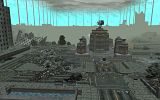FSAA and Visscale
In the end, I'd say use the setting that gives the very best results for your setup...that is why you have different choices. Visscale/4 is REALLY cpu intensive, and many puters wouldn't be able to handle it...might cause lag for a lot of folks. I think you could click on your CoH folder in Windows Explorer, open the file 'options' and add visscale 4 at the bottom and save. (If it caused a problem, just go back in and delete it.) The other way is to create a keybind that you could hit real quick when you need it.
you could try /bind numpad1 "visscale 4" (or use the tilde key so you could hit it with your pinky fast.) Sure hope this helped a bit. Good luck!
 �Many things worth doing in the world had been declared impossible before they were done.�
�Many things worth doing in the world had been declared impossible before they were done.�
|
Oh, and regarding visscale, is there any way to keep /visscale 4 permanent? Sucks having to change it back every time i zone/relog.
|
/bind numpad0 "visscale 4"
If I ever feel like looking a little farther, I just tap the key. No need to have it on all the time unless I'm spending a lot of time in the zone I'm in.
If you want it to be "perma", simply bind it to one of your existing movement keys, and it'll turn on automatically as soon as you move after zoning. Then you wont have to think about it.
For example:
/bind W "+forward$$visscale 4"
/bind SPACE "+up$$visscale 4"
Okay... first question. Why on earth do you want to render everything in a zone to begin with?
Second question: do you know what Anti-Aliasing does?
Reason I ask this is because I'm not exactly sure you have a full handle on what AA does, and what the different levels are. To give a background on Filter effects, drop by Bit-Tech and read these two articles: http://www.bit-tech.net/hardware/200...ng_filtering/1 :: http://www.bit-tech.net/hardware/200...ng_filtering/1
The short version is that the function of Anti-Aliasing is to remove jagged edges from off-angle lines in a rendered 3D scene.
The same function can also be achieved by increasing the amount of pixels available to render in. The more pixels that can be drawn into, the less a rendered display needs to fudge pixel color values where different colored or textured items meet.
In some 3D cases, you can actually over-render a scene, providing too much detail separation: http://www.cgarchitect.com/upclose/V...%20Effects.pdf
***
Now, one of the things to keep in mind about Full Screen Anti-Aliasing... and this is a gross under-simplification of what's going on... is that you are basically rendering the scene in a resolution that is x AA amount times your resolution.
What this means is that if you render an 800*600 screen at 2X Full Screen Anti-Aliasing, you are effectively rendering the scene at (800x2)*(600x2), or 1600*1200, and then down-sampling that image back to 800*600. At some point on a fixed resolution display, you will start to lose obvious benefits of the image being super-sampled in a higher resolution, and then scaled back down.
This super-sampling and scaling back is why Anti-Aliasing typically carries such a high performance penalty. It's only been recently that graphics cards have gotten to the point where they can run medium levels of Anti-Aliasing without actually loosing much in the way of pixel pushing performance.
Case in point: Microsoft's DirectX 10.1 specification basically requires that all DX 10.1 certified graphics cards be able to render a 3D sceen with 4x Anti-Aliasing.
|
Okay... first question. Why on earth do you want to render everything in a zone to begin with?
|
Second, why on earth do you want to turn up your World Detail setting? Or render shadows? Or reflections? Because it makes the game look better. visscale 4 makes the game look better than visscale 2(which is the limit if you only use the slider in Options) and it makes it game look better than visscale 3. For those of us who have computers that can handle it, visscale 4 is a nice visual step up. If I can continue to use it when Ultra Mode hits, I will.
As to the OP's question, the easiest way I've found is to bind it. I do have to reset it when I relaunch CoH, but I've not had it reset when I zone. It usually lasts through my entire session, even when switching characters.
|
Well first of all, visscale 4 doesn't actually render everything in the zone, at least not visually.
|
If that information is wrong, and you know something about the visscale system that the original author didn't put into that wiki, sounds like you might want to go in there and make some changes.
| There are many smaller detail objects that don't show up until you get closer. Things like leaf piles and boulders. Not to mention, you don't see any NPCs or players outside of a certain range no matter what settings you use. |
|
Second, why on earth do you want to turn up your World Detail setting? Or render shadows? Or reflections? Because it makes the game look better. visscale 4 makes the game look better than visscale 2(which is the limit if you only use the slider in Options) and it makes it game look better than visscale 3. For those of us who have computers that can handle it, visscale 4 is a nice visual step up. If I can continue to use it when Ultra Mode hits, I will. As to the OP's question, the easiest way I've found is to bind it. I do have to reset it when I relaunch CoH, but I've not had it reset when I zone. It usually lasts through my entire session, even when switching characters. |
Lets say you were standing on top of City Hall in Atlas Park and looking south. Setting a higher visual scale will simply change whether or not the buildings in the background are rendered with their full or partial detail levels. If you have other filtering affects enabled, such as Anti-Aliasing, Depth of Field, Anisotropic Filtering, and Ambient Occlusion, the impact of drawing an object further out will be lost much sooner.
There's also pretty much a hard limit on your actual resolution versus how much of the detail will show. Even in high resolutions, like 1920*1200 or higher, there's a point at which the game can be drawing objects in full detail that are going to be too far away to be rendered in full detail anyways.
So, if you think it looks better to you, Great. Good job. Wonderful eye sight you have, and I must simply know who made your monitor.
For my eyes and the guys I snagged into taking a look at the live game running on RadeonHD 4850 against 1920*1200, we had quite a bit of... "did that setting actually do anything?"
je_saist: Vicscale 4 simply sets the Wold Detail at 400%, it's not a "render everything" code. I don't see anything in the link you provided that implies that. All it says is there is a hard limit on what you can set the value at. Even though it does make the War Walls appear on the opposite side of the zone, there are still many smaller details inbetween that are not Rendered yet.
I like using Visscale 4 because even though the land masses have rendering priority and appear much sooner, it's not very realistic to have trees and rocks suddenly appear on them as you get closer. While Visscale 4 does not completely solve this, it does make it a lot better. If I'm spending a lot of time in a zone, I'll turn it on.
Why do we use it? Because we CAN! Same reason people use 200% instead of 100%. It does look better.
Kyasubaru: The game's preferences do not allow 400% world detail and do certainly reset after zoning. If you zone and look across an open zone, then run the command again, I bet you'd notice the difference. If you don't, then I'd love to know how you set it up that way. I'd want to do the same.
MSAA doesn't rely on sharing samples between pixels, as that Bit-tech article describes. I'm rather disappointed in them for that. Here is a better explanation.
Multisampling is an evolution of supersampling, wherein the graphics card does a quick check of the depth of every pixel on the screen. Where polygon edges are found, the pixels in question are sub-sampled, in a varying pattern.
Simply put, the graphics card hunts for where jaggies would occur, and renders them at higher detail, smoothing the edges out. The disadvantage is that anything within a polygon isn't improved, like textures. The same goes for transparent textures, as seen on trees or wire fences.
As an aside, some methods of MSAA do in fact use samples between pixels, as Bit-tech say; but this is an exception. Examples can be seen in ATi's Wide-Tent Filtering and nVidia's (abandoned) Quincunx AA. Unfortunately, this also blurs the entire picture.
/Vis_scale 4 is a valid way of gaining more detail. Even in Atlas Park, the extra draw distance allows many more trees to be drawn. The only trouble area for this level of detail is that mess in southern Cap au Diable.
EDIT: Do not become inflammatory if people don't share your opinion. Instead, just present the facts.
200%
300%
400%
The effect of world detail is best seen in motion, when objects become close enough to be rendered. You can clearly see that visible objects are being shown up at 400% which are lost at lower settings. Subjectively, a real sense of immersion is added when objects emerge at a high level of detail out of the fog, rather than growing in complexity as you get nearer.
If you don't want to use this setting because you feel the visual impact is negligible, that is your prerogative. But there is no need to tell people that the setting does absolutely nothing.
Necrobond - 50 BS/Inv Scrapper made in I1
Rickar - 50 Bots/FF Mastermind
Anti-Muon - 42 Warshade
Ivory Sicarius - 45 Crab Spider
Aber ja, nat�rlich Hans nass ist, er steht unter einem Wasserfall.
Nice job on the pictures Necrotron. I was about to do the same thing, but I had to run to a Dentist appointment, so I'm posting mine a bit late. I also included the standard lower settings just to show how the detail on some objects can also be improved by this setting. If you look at the sandbags in front of this RWZ station, you'll see the difference in quality on these items as the draw distance is improved.
RWZ 50%

RWZ 100%

RWZ 200%

RWZ 300%

RWZ 400%

Like Necrotron said, it's just a matter of preference where you want to stop. I'd go even higher if I could, but that's me.
OK, I just tested it. I set vis_scale 4 using my usual bind while inside my base, then I zoned out to Peregrine. It was still at 4. I zoned to Talos, still at 4. I zoned to Steel, still at 4. I logged out and switched chars, and it was still at 4. Every time I zoned I made sure to check the difference between 2 and 4, but every time it started out at 4.
So I dunno why it's resetting for you guys, but for me it only resets when I fully quit and relaunch CoH.
my bind is "vis_scale 4$$dofweight 0.6$$lodbias 2$$suppressclosefxdist 300" and it's on my F11 key.
dofweight doesn't really do anything for me right now since I'm on an ATI and have it disabled, and I change suppressclosefxdist between 3 or 300 depending on which character I'm using, but otherwise the rest of the bind stays the same.
Edit: Also tested it going in/out of a mission, still doesn't reset. Dunno why.
How are you testing the value? Are you just going by what you see visually, or are you running the command "/visscale" (with no number) for it to tell you the exact current value after zoning?
As for it resetting.. it has reset for everybody I know ever since I started playing. I just took that to be the norm.
What OS do you use? I noticed that even if you set it to 4.0 in the CoH registry, it still defaults back to 2.0 in the registry every time you run the game again. Maybe for some reason your registry is being read differently and not reverting right away? I dunno.
Edit:
Interestingly enough, I just ran the command while in my base, and it didn't change after I zoned. I guess that seems to be the key to it.
Either that or they fixed it. Niiice! lol
Edit2:
Rechecking the registry fix, it still reverts back to 2.0 after loading the game every time.
On a fresh client, I then tried using the command while in Talos. I moved to Skyway and it was still at 4.0, and even relogging kept the value at 4.0... so I guess it really does stay at 4.0 now. That's awesome!
PS - Sorry for doubting you. I'm used to it resetting on me for the last few years, I was doubtful it would be persistent now. lol
I've been using it for at least a couple years and don't remember it resetting myself, so it seems there's still some kind of.. schism.
But it doesn't matter anymore, if yours works now too.
And I was actually doing both, comparing visuals and looking at the value of just typing in /vis_scale. There's a pretty stark contrast between 2 and 4, just visually though.
|
I've been using it for at least a couple years and don't remember it resetting myself, so it seems there's still some kind of.. schism.
|
Odd indeed, but like you said.. as long as it works, then woo-hoo! Thanks again for making me double-check it. lol

This is on a nvidia card if it makes any diff... So i guess this is a question in relations to nvidia users.
Currently using a 22'' lcd at 1680x1050, and have always been wondering about fsaa and its effects.
Now usually i just run at 4x fsaa, application controlled in nvidia control panel, but i know my card lets me go up to 16x, this obviously isn't supplied in the CoH graphics menus but alas is accessable via slash command.
Whenever I do turn it on it sorta seems to make some things appear more well-constructed and less jaggy far off, but in alot of cases 16x makes things seem more jaggy then 4x, especially like on things close and on your character, 8x does the same thing but is a middle ground between 16 and 4 of course.
I'm wondering if this is just because 16x is too much for a 1680x1050 res? And if I were using a 30'' lcd and at 2560x1600 the 16x could actually yield a visual benefit? Cause as of right now 4x looks better on my res and runs smoother. Could potentially be a CoH thing as 16x does seem to work better with games like Arkham Asylum etc.
Just wondering if anyone notices this or could go into more detail. Oh, and regarding visscale, is there any way to keep /visscale 4 permanent? Sucks having to change it back every time i zone/relog.